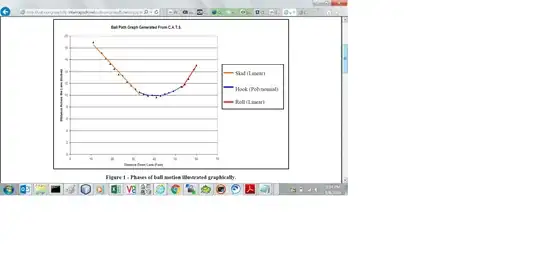As an aspiring professional bowler, I'm attempting to understand all the factors that influence a bowling ball motion.
The simplest case is when the bowling ball is a uniform sphere and the center of mass is at the geometric center of the ball. (As bowlers, we can and often do drill the ball such that center of mass is offset from the geometric center and such that the inertial tensor has non-zero off-diagonal elements to change the 'ball shape'; eg the path of the ball).
A bowler delivered the bowling ball with an initial velocity and initial angular velocity. The bowling lane is 60 feet long. The first 30 feet is coated with oil such that the coefficient of friction is nearly 0. The last 30 feet has no oil such that the coefficient of friction is greater than 0, but constant, normally 0.20
The bowling ball will travel in a straight line in the oil. When it encountered friction at 30 feet, it will then hook and that curve is a parabola. (United States Bowling Congress http://usbcongress.http.internapcdn.net/usbcongress/bowl/equipandspecs/pdfs/articles/skid_hook_roll_v3_final.pdf ).
Why is the hook curve a parabola? Understanding that the path is a parabola will allows the bowler better aim at target 60 feet away.
Articles regarding dynamics of a rolling ball (I wasn't able to understand from these articles why the contact force is constant, resulting in the ball path being a parabola) http://billiards.colostate.edu/physics/Hierrezuelo_PhysEd_95_article.pdf http://biosport.ucdavis.edu/lab-meetings/Frohlich%202004%20What%20makes%20bowling%20balls%20hook.pdf
